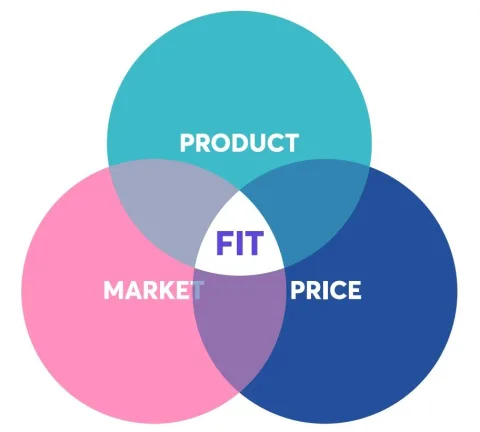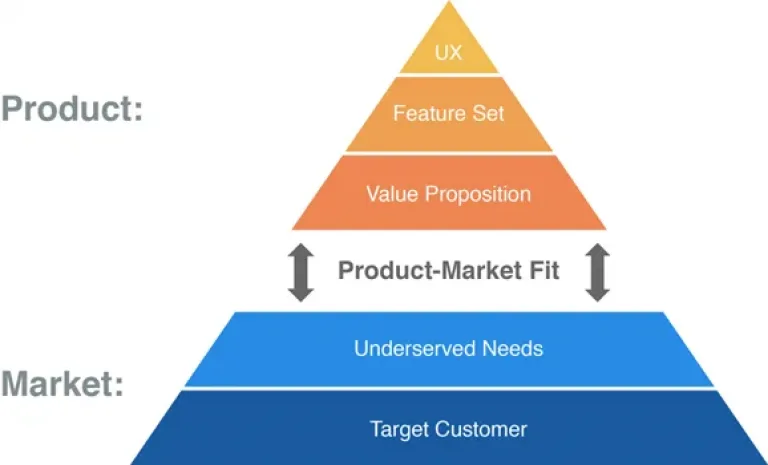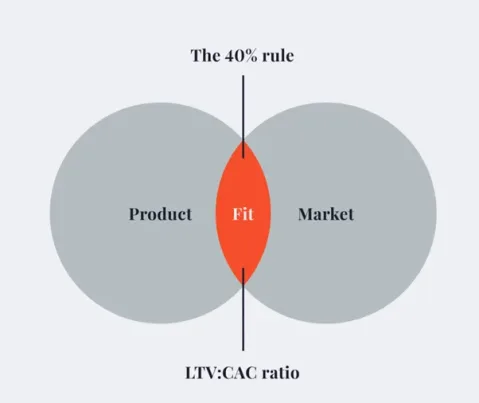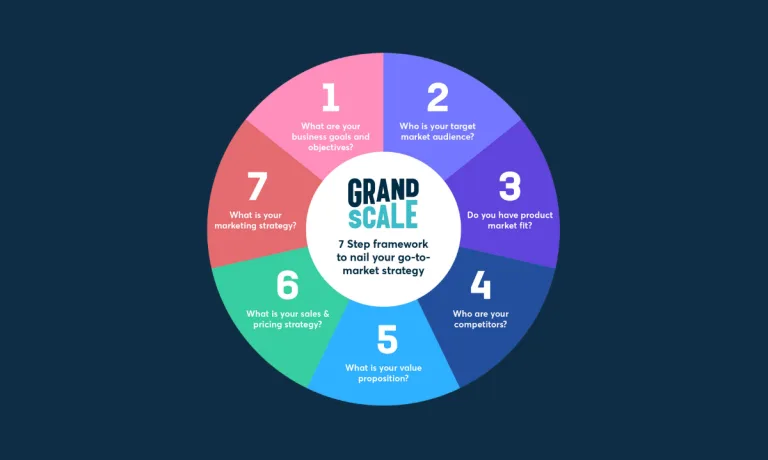
6 steps to Achieve Product-Market Fit & Secure Strong Growth
Whenever you see a successful B2B tech company, you can be certain it has achieved a great product market fit. On the other hand, if you see a business struggling to take off, the chances are high that its product, although good, isn’t the perfect fit for the market segment that’s being targeted.
One analysis of over 100 start-ups that shut down found that 35% didn’t solve a valid customer problem. Alex Shultz, Chief Marketing Officer and VP of Analytics at Meta (formerly Facebook) has said the number one problem for most of the start-ups he has advised is that they don’t actually have a product/market fit when they think they do. Ouch.
Clearly, getting a good product-market fit is vital – and not just as part of a successful go-to-market strategy. Ultimately, it will help you achieve sustainable growth and business success. So in this post we help you figure out product-market fit, explain why it’s important, the six steps you can take to achieve it and how you can measure it.
What is product-market fit?
Product-market fit is one of the most important yet least understood marketing concepts. The clue, though, is in the name: the product or service just fits. It fixes problems, it helps people achieve goals, it fills a need in a defined market; customers are willing to pay, sales are repeatable, and because of that you can grow your business and profits.
Forbes Magazine explains it as hair-on-fire problem that an identifiable group of people have. If your hair is on fire your number one priority is to put it out. And if someone hands you a bucket of sand, you’ll use it. That bucket of sand may eventually refine itself into a bucket of water and then a hosepipe, but even the first iteration of the product will have solved the customer’s problem.
When a product perfectly fits a market, or a market segment, it is firmly on the pathway to success. In Spotify’s case, for example, Daniel Ek, co-founder at the time, had an idea for charging willing users a small fee for the legal and easy availability of music. A very simple value proposition.
What turned Spotify into such a huge success was the existence of a large market of music fans who were willing to pay a small amount, on a regular basis, to listen to songs without legal or copyright issues. The Spotify offering was what the market was looking for. The product-market fit was spot on.
3 Elements to Product Market Fit

Why is product-market fit so important?
In a great product-market fit scenario, a company’s target customers are buying, using and telling others about the product in numbers large enough for the business to grow – you’re hiring, the press is interested and profitability is good.
In a poor product-market fit scenario, the sales cycle is protracted and conversions are low. There is a lack of product understanding and not much word of mouth in the marketplace. Lots of deals may never close, media reviews are sparse or mediocre, and there’s high customer acquisition cost.
So, product-market fit is absolutely vital for business viability and profitability. This means B2B tech businesses going to market should spend time on their product-market fit and developing their ideal customer personas, as part of their go-to-market strategy. These two elements are extremely important and interdependent. Those that do a good job with making their product fit the market will dramatically increase their chances of success.
Six steps to achieving product-market fit
Product-market fit is unique for every business and every product. However, there are established processes and frameworks to help you find what works for yours, and as the image below shows, the foundation is understanding the target customer. Dan Olsen, product management expert and author, who created the Product-Market Fit Pyramid, offers the following six-step framework to help achieve product-market fit.

Step 1. Determine your target customer
Who do you think will buy your offering? How will it meet their needs? You might not know exactly who your target customer is at first, but you can find out through market research. And by using that research to create customer personas, you can envision your target customer and create the perfect solution for them.
Step 2. Identify underserved customer needs
It's hard to sell a product in a market full of existing solutions that people are already pretty happy with. The smart move is to find out what they’re unhappy with and service that need. What pain does your target customer have? How can you help them alleviate it?
Step 3. Define your value proposition
How will your product meet your customer's needs better than any of the alternatives currently available? Will it offer better quality? A more affordable price? More exciting packaging? New features?
Step 4. Specify your minimum viable product feature set
Identify the minimum features you want to include on your first product rollout. Keep it simple and doable.
Step 5. Create your minimum viable product prototype
Don’t worry about actually creating your full concept yet – instead, just create a bare-bones product.
There will be time to reiterate and evolve your product later and there’s no better way to improve your product (and its market fit) than under the guidance of your initial customers.
Step 6. Test your minimum viable product prototype with customers
Show your product to a select group of your potential customers. Test. Get their feedback. Let them learn about it and try it out for themselves. Ask them what they like about it and what they don't. What would they prefer to see instead? Stay open and flexible to feedback so you can revise your idea to accurately fit your customers’ wants and needs.
After following Olsen’s six steps, you should have a pretty good idea of how the market will react to your product. Before you go to the market though, make sure to implement customer feedback. You may want to change certain features of your product, consider a new target market, or even redefine your value proposition.
Remember, the top reasons B2B tech companies fail to achieve product-market fit are:
- They don’t validate the market need in the first place.
- They don’t talk to customers.
- They focus solely on product, not testing channels early and often.
- They mistake ‘bells, whistles and shipping features’ for making progress.
Measuring product-market fit – the 40% rule
One of the best ways to measure whether your offering is a fit for the market is the 40% rule.

It involves getting feedback from existing, potential or trial customers on how they would feel if they no longer had access to the offering. This can be done in the form of a survey, which begins with the question: how would you feel if you could no longer use the product?
- Very disappointed
- Somewhat disappointed
- Not disappointed (it really isn’t that useful)
- N/A — I no longer use it
If at least 40% of them indicate that they will be “very disappointed”, your product is a good fit for the market and you have the green light to go to market.
The lesson? Take time to get your product-market fit right and reap the rewards of your innovation. Be laser-focused on the market, the problem potential customers have, and how you uniquely solve it. Then you can build a powerful go-to-market strategy which communicates your value proposition to volumes of your target customers and generates the demand for your product that will lead to business success.
What's next?
Download The ultimate guide for B2B companies to rapidly scale their customer base to learn how to systematically engage with a significant volume of high value leads, nurture them through automated marketing and generate a sustainable pipeline of potential customers for your business.
Download The ultimate guide for B2B companies to rapidly scale their customer base


